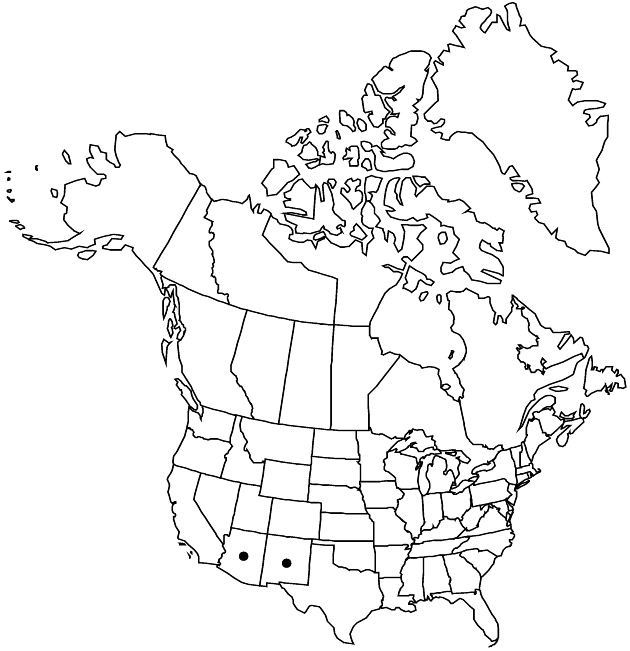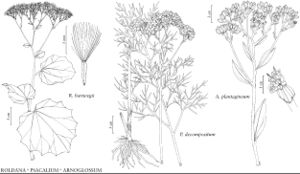Difference between revisions of "Psacalium decompositum"
Phytologia 27: 260. 1973.
Illustrated
Basionym: Cacalia decomposita A. Gray Smithsonian Contr. Knowl. 5(6): 99. 1853
Synonyms: Mesadenia decomposita (A. Gray) Standley Odontotrichum decompositum (A. Gray) Rydberg
Treatment appears in FNA Volume 20. Treatment on page 622.
FNA>Volume Importer |
imported>Volume Importer |
||
| (One intermediate revision by the same user not shown) | |||
| Line 6: | Line 6: | ||
|place=27: 260. 1973 | |place=27: 260. 1973 | ||
|year=1973 | |year=1973 | ||
| + | }} | ||
| + | |special_status={{Treatment/ID/Special_status | ||
| + | |code=F | ||
| + | |label=Illustrated | ||
}} | }} | ||
|basionyms={{Treatment/ID/Basionym | |basionyms={{Treatment/ID/Basionym | ||
| Line 59: | Line 63: | ||
|publication title=Phytologia | |publication title=Phytologia | ||
|publication year=1973 | |publication year=1973 | ||
| − | |special status= | + | |special status=Illustrated |
| − | |source xml=https:// | + | |source xml=https://bitbucket.org/aafc-mbb/fna-data-curation/src/2e0870ddd59836b60bcf96646a41e87ea5a5943a/coarse_grained_fna_xml/V19-20-21/V20_1394.xml |
|tribe=Asteraceae tribe Senecioneae | |tribe=Asteraceae tribe Senecioneae | ||
|genus=Psacalium | |genus=Psacalium | ||
Latest revision as of 20:00, 5 November 2020
Perennials; caudices thick, tough. Stems subscapiform, densely hairy proximally, sparsely hairy to subglabrous distally. Leaves mostly basal; petiole lengths ± equaling blades; blades ovate or elliptic, 20–30(–40) cm, nearly as wide, deeply 3–4-pinnatisect, ultimate lobes narrowly triangular to oblong, acute; mid and distal leaves progressively smaller, bractlike. Calyculi: bractlets 2–4 mm. Phyllaries (4–)5–7 mm. Corollas 7–9 mm. Cypselae 4–5 mm; pappi 4–7 mm. 2n = 60.
Phenology: Flowering summer–early fall.
Habitat: Shady sites, open woodlands
Elevation: 1700–2600 m
Distribution

Ariz., N.Mex., Mexico (Chihuahua, Durango, Sonora).
Discussion
Psacalium decompositum barely enters the flora area in Arizona and New Mexico.
Selected References
None.
Lower Taxa
None.
